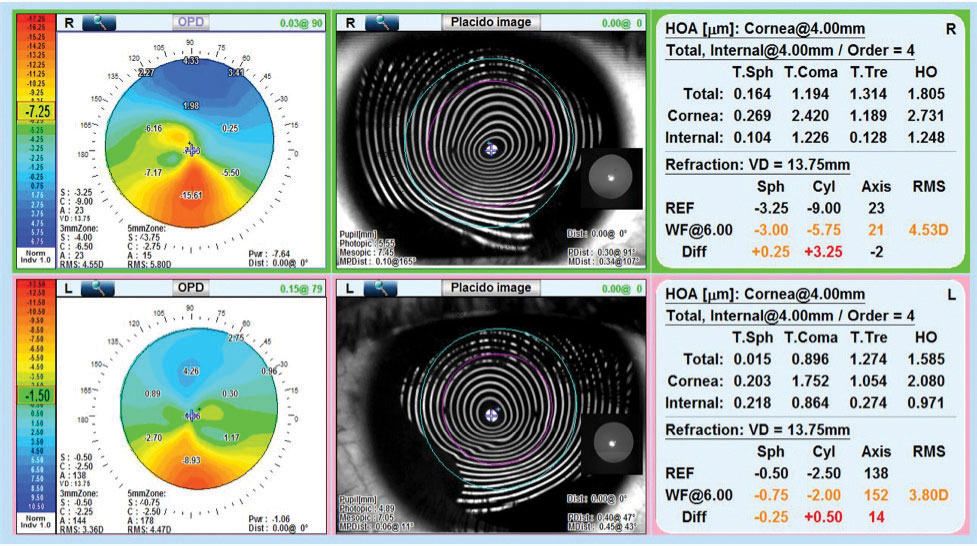 |
| This study found a possible connection between HOAs and high myopia development. Photo: Thomas A. Wong, OD. Click image to enlarge. |
Researchers studying the distribution of higher-order aberrations (HOA) among highly myopic Chinese children and adolescents recently reported an association between HOAs and axial length, suggesting that HOAs may play a role in the development of high myopia.
A total of 458 highly myopic (SE ≤ -5D) subject’s right eyes were assessed for baseline cycloplegic ocular and corneal HOAs, axial length, spherical equivalent, astigmatism and interpupillary distance. The researchers compared HOAs among baseline age groups (≤12 years old, 13 to 15 and 16 to 18). A total of 99 subjects completed the one-year follow-up. The researchers used data from an early study of moderate myopia as a comparison.
“Almost all ocular HOAs and few corneal HOAs exhibited significant differences between age groups,” the researchers wrote in their paper.
After the one-year follow-up, they found that lower levels of annual ocular secondary horizontal comatic aberration changes were associated with axial elongation in highly myopic children and adolescents. (This included secondary horizontal comatic aberration, primary spherical aberration and spherical HOA.) When they compared the data to the moderate myope group, they found that the association of comatic aberration and axial length was only found among higher myopes.
Their findings shed some light on possible myopia etiology and development in highly myopic individuals.
“Vision-dependent mechanisms may play a vital role in the emmetropization process and refractive error development in childhood,” the authors wrote. They noted that unlike lower-order aberrations, HOAs can’t be corrected with spectacles or contact lenses.
Xu Y, Deng J, Zhang B, et al. Higher-order aberrations and their association with axial elongation in highly myopic children and adolescents. Br J Ophthalmol. January 13, 2022. [Epub ahead of print]. |

